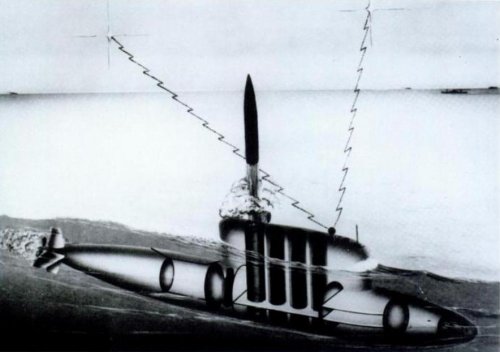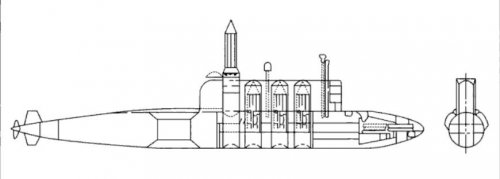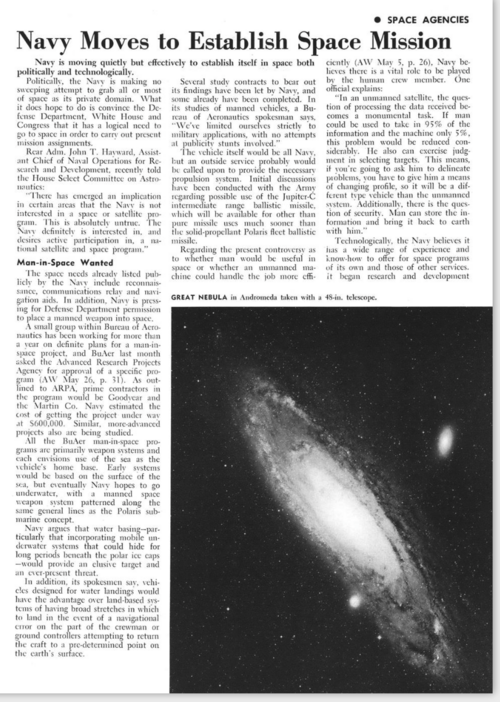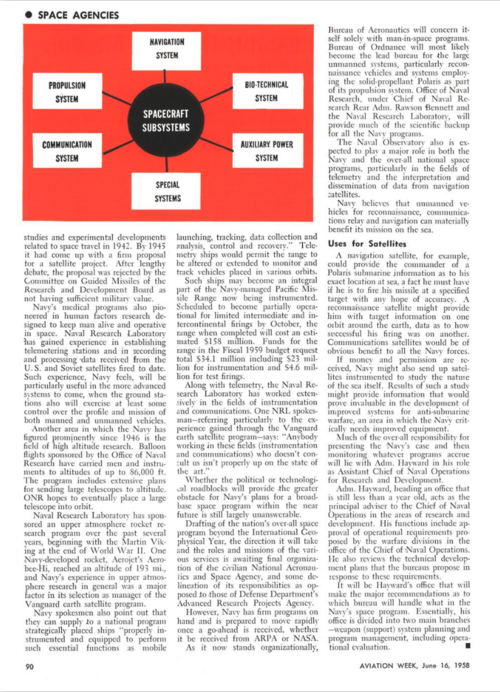During the mid-1950s, Chief of Naval Operations (CNO) Admiral Arleigh Burke sponsored a high-priority program to develop a naval intermediate range ballistic missile.
On November 8, 1955, the Secretary of Defense established a joint Army and Navy intermediate range ballistic missile (IRBM) program--Jupiter. The sea-based Jupiter program was going to send the missile to sea using converted merchant ships. In 1956, a schedule was developed to send the first Jupiter-armed merchant ships to sea in 1959. Some studies were also addressing the feasibility of submarines launching the Jupiter IRBM from the surface, with four missiles to be carried in a nuclear propelled submarine of some 8,300 tons displacement.
Caption for artist's impression:
On November 8, 1955, the Secretary of Defense established a joint Army and Navy intermediate range ballistic missile (IRBM) program--Jupiter. The sea-based Jupiter program was going to send the missile to sea using converted merchant ships. In 1956, a schedule was developed to send the first Jupiter-armed merchant ships to sea in 1959. Some studies were also addressing the feasibility of submarines launching the Jupiter IRBM from the surface, with four missiles to be carried in a nuclear propelled submarine of some 8,300 tons displacement.
Caption for artist's impression:
From Cold War Submarines: The Design and Construction of U.S. and Soviet Submarines by Norman Polmar and Kenneth J Moore, Brassy's, Inc., 2004.Forced to join the Army in a quest for a ballistic missile force, the Navy produced several preliminary designs for a submarine to launch the liquid-propellant Jupiter missile. This version has four SLBMs in a modified Skipjack hull. Satellite navigation is shown being used as the submarine's sail penetrates the surface.









